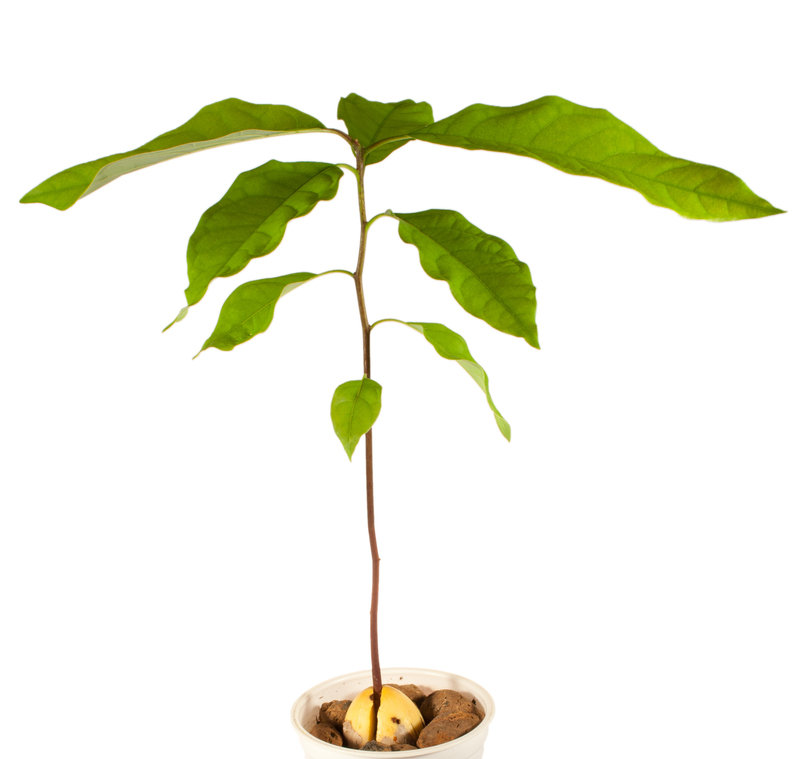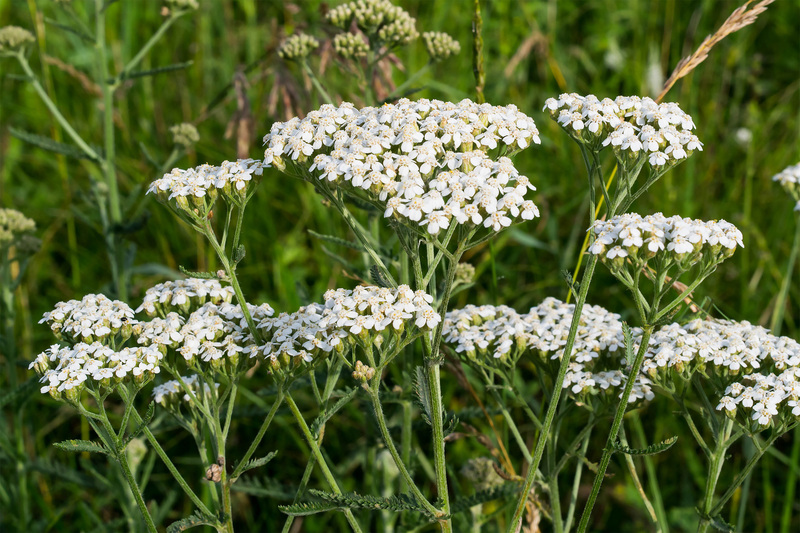Winter Preparedness for Garden Plants: Stay Protected All Season
Posted on 31/08/2025
Winter Preparedness for Garden Plants: Stay Protected All Season
Winter can be the most challenging season for garden enthusiasts. Frost, snow, and chilling winds can wreak havoc on even the toughest plants. Proper winter preparedness is essential to ensure your garden not only survives but thrives once spring returns. This in-depth guide will walk you through all aspects of winter protection for plants and help you keep your garden healthy throughout the cold months.
Why Winter Preparedness for Garden Plants is Essential
Every garden faces unique challenges during winter. Some plants are naturally hardy; others require a little extra care to make it through to spring. Understanding the importance of winter plant care is the first step toward a resilient garden. When adequately protected, your plants will:
- Return stronger in spring
- Have a better chance of flowering and fruiting
- Be less prone to pests and diseases
- Require less work to rejuvenate

Understanding Your Hardiness Zone
A successful winter garden protection strategy begins with understanding your USDA Hardiness Zone. This initiative measures the average coldest temperature in your area:
- Check your zone: Know what temperatures your plants can tolerate.
- Select appropriate plants: If you're in Zones 3-5 (colder regions), opt for extra-hardy varieties.
- Plan protection: Even hardy plants may need help in record-cold winters.
Best Practices for Preparing the Garden Before Winter
1. Clear Out Dead or Diseased Plant Material
Removing dead foliage and fallen leaves is essential to prevent the spread of plant diseases and unwanted garden pests. Don't compost diseased material! Properly dispose of infected leaves and stems, especially if you noticed fungal issues during the growing season.
2. Mulching for Insulation
Mulching is perhaps the most critical winter preparedness step you can take for your garden beds. Mulch acts as a natural blanket, keeping the soil warmer and shielding roots from dramatic temperature swings.
- Best materials: Shredded bark, straw, leaves, wood chips, or pine needles.
- Apply 2-4 inches: Spread evenly around the base of perennials, trees, or shrubs--leave a slight gap around stems to prevent rot.
3. Watering Prior to Freeze
While it seems counterintuitive, ensuring that your plants are well-hydrated before the ground freezes is a vital technique. Moist soil retains heat better than dry soil.
- Deep water: Give trees, shrubs, and perennials a good soak before deep frosts hit.
- Stop watering: Once the ground freezes, it's best to stop watering to avoid root rot.
4. Pruning and Cutting Back
Pruning is an integral part of winter preparedness for garden plants. However, it's best to avoid heavy pruning in late fall since it can stimulate tender new growth that's susceptible to frost damage.
- Remove dead branches: Cut away anything diseased, broken, or dead.
- Shape trees and shrubs: Light pruning for structure is beneficial, but major pruning is best done in late winter or early spring.
Winter Protection for Different Types of Plants
Protecting Perennials and Bulbs
Most perennials are designed to die back and go dormant over winter, but some still benefit from extra insulation.
- Cut back: Remove faded foliage but leave some stems for insulation.
- Apply mulch: Top the crowns with straw or leaves for added warmth.
- Mark locations: Use plant markers to avoid damaging crowns during snow cover.
Protecting Trees and Shrubs
Trees and shrubs, especially young or newly planted specimens, are prone to winter damage from temperature fluctuation and drying winds.
- Mulch generously: Apply a thick layer around the base, extending out to the drip line.
- Wrap trunks: Use tree wrap or burlap on young trees to prevent sun scald and animal damage.
- Water well: Deep watering before the freeze fortifies their roots.
- Shield from winds: Erect windbreaks or use burlap screens if your region gets harsh winds.
Protecting Evergreens
Evergreens lose moisture during winter via their needles or leaves. Drying winds and sun exposure cause "winter burn"--a common issue addressed through proper winter preparedness.
- Water well before freeze: Evergreens need sufficient moisture heading into winter.
- Mulch around roots: Reduces drastic soil temperature changes.
- Wrap with burlap: In very cold or windy areas, use burlap wraps to shield foliage from direct exposure.
- Anti-desiccant sprays: Apply to prevent excessive moisture loss, especially on broadleaf evergreens.
Protecting Container Plants and Raised Beds
Containers and raised beds offer less natural insulation than in-ground plantings. Extra winter flower plant protection is needed:
- Bring pots in: Move sensitive container plants to an unheated garage, shed, or against a south-facing wall.
- Group together: Cluster containers to create a microclimate and shield from wind.
- Insulate containers: Wrap pots with bubble wrap, burlap, or old blankets.
- Mulch top of soil: Add an additional 2-4 inches of mulch to the surface inside the pot.
Special Considerations for Annuals and Tender Plants
Annuals typically complete their life cycle in one season but may self-seed. Tender plants, including some herbs and vegetables, must be either brought inside or protected with cloches, cold frames, or greenhouses.
- Harvest remaining crops: Pick any veggies before the first hard frost.
- Use cold frames or row covers: These extend the growing season for cool-season crops.
- Pot up delicate herbs: Move indoors to a sunny windowsill for continued harvest.
Strategies for Severe Winter Weather
Heavy Snow, Ice, and Freezing Rain
Excess snow can be both beneficial (insulation) and harmful (breakage). Gently brush snow from shrubs and small trees, but let it remain on perennials for insulation. Do not shake frozen branches--they can snap easily. Use support stakes for weak or top-heavy plants.
Extreme Temperature Fluctuations
Sudden thaws followed by hard freezes are especially tough for garden plants. Extra mulch can help regulate soil temperature. For highly sensitive plants, consider additional coverings such as frost blankets or garden fleece during unusually cold nights.
Wind and Salt Exposure
Wind dries out plant tissue and strips soil of moisture. Erect temporary windbreaks of burlap or snow fencing. If your garden is near roads treated with de-icing salt, build physical barriers and water thoroughly in early spring to flush salts away from roots.
Plant Protection Supplies for Winter Preparedness
There are many tools and materials designed for winter preparedness for garden plants:
- Burlap wrap and rolls
- Frost blankets or floating row covers
- Mulch: straw, leaves, wood chips
- Tree guards and trunk wraps
- Anti-desiccant sprays for evergreens
- Plant markers and stakes
- Cold frames, cloches, or temporary greenhouses
Preparing for Spring: The Payoff of Winter Preparedness
The efforts you put into winter preparedness for garden plants will make spring gardening a joy instead of a crisis. Here's what to expect:
- Less winter die-back means more vigorous plants in spring
- Fewer overwintering pests and diseases in your soil
- Tidier garden beds ready for planting
Pro Tips for Effective Winter Garden Preparedness
- Stay Informed: Regularly watch weather updates for early frost warnings or late cold snaps.
- Observe Your Garden: Track which areas are most wind-exposed or prone to flooding and amend protection each year.
- Choose Native Plants: Plants adapted to your climate are more resilient and require less fussing over winter.
- Experiment and Adjust: Take notes each winter and adjust your strategies as needed.

Frequently Asked Questions about Winter Plant Protection
Should I fertilize my garden in fall?
It's best to stop fertilizing about 6 weeks before your first expected frost. Fertilizing too late can stimulate tender growth that is easily damaged by cold.
How do I know if my plant survived the winter?
Be patient: Many perennials and shrubs leaf out later in spring. Gently scratch the bark with a fingernail--green tissue beneath is a good sign of life.
Are snow and ice dangerous for garden plants?
While deep snow can act as an insulating blanket, <> too much weight can damage branches. Ice is more hazardous--support sensitive shrubs in exposed locations to prevent breakage.
Conclusion: Prepare Now, Enjoy Later
Winter preparedness for garden plants is not just a precaution--it's a crucial part of year-round healthy gardening. Whether you're a novice or seasoned gardener, investing time in winter plant protection ensures your landscape will reward you come spring. Make a checklist, gather supplies, and put protective measures in place before cold weather arrives. With these effective strategies, your garden will stay safe, healthy, and beautiful all winter long.
Protect your garden plants this winter, and they will thank you with lush growth, colorful blooms, and successful harvests next year. Prepare today to enjoy a thriving garden all season!



